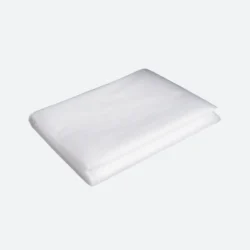-
Non Woven Dust Sheets
Non Woven Dust Sheets – 12′ x 9′
£12.60 – £189.03 Select options This product has multiple variants. The options may be chosen on the product page
Pro Tips for Using Dust Sheets Like a Painter: Mastering the Art of Protection
Conquering a painting project requires not just skill with the brush, but also mastery of the tools that keep your space clean and organized. Dust sheets for painting are your allies in this battle against dust and drips. But wielding them effectively elevates your painting game to a whole new level. Here are some pro tips to transform you from a novice dust sheet user to a seasoned pro:
Securing the Shield: Anchoring Your Dust Sheets
Dust sheets flapping in the breeze or slipping off furniture are a recipe for disaster. Here’s how to ensure your sheets stay put:
- Painter’s Tape: This is your best friend. Use painter’s tape to secure dust sheets to walls, baseboards, and furniture edges. It offers a strong hold without damaging surfaces.
- Drop Cloth Clips: For thicker drop cloths, invest in specialized clips that grip the fabric and hold it firmly in place.
- Furniture Legs: Utilize the power of gravity! Tuck the dust sheet under furniture legs or drape it over chairs to create a secure fit.
Conquering Corners: Eliminating Dust Bunnies’ Havens
Corners are prime real estate for dust bunnies to gather during painting projects. Here’s how to create a dust-free zone:
- Diagonal Folds: For corners, fold the dust sheet diagonally to create a triangular shape. This eliminates excess fabric and provides a snug fit.
- Double Up: For extra protection in high-risk corners, layer two dust sheets to create a thicker barrier against dust and paint.
Taming the Beast: Folding and Storing Dust Sheets
Proper storage extends the lifespan of your dust sheets. Here’s how to fold them like a pro:
- The “Envelope Fold”: Start by spreading the dust sheet flat. Fold one-third of the sheet inwards, then fold the opposite side inwards to meet the first fold. Repeat this process until the sheet is a manageable size for storage.
- Labeling is Key: Label your dust sheets with the material (canvas, plastic) and size for easy identification during future projects.
- Store Wisely: Choose a cool, dry place for storage. Avoid damp basements or attics to prevent mildew growth.
Bonus Tip: Multitasking Marvels
Dust sheets aren’t just for painting! Repurpose them for other projects:
- Drop Cloth for Crafts: Use them as a protective surface for messy art projects like clay sculpting or resin work.
- Picnic Blanket: A large dust sheet can be a perfect impromptu picnic blanket for outdoor adventures.
- Temporary Shelter: In a pinch, a dust sheet can create a temporary shelter from rain or sun during outdoor projects.
With these pro tips in your arsenal, you’ll be a dust sheet master, ensuring a clean and professional painting experience from start to finish.




